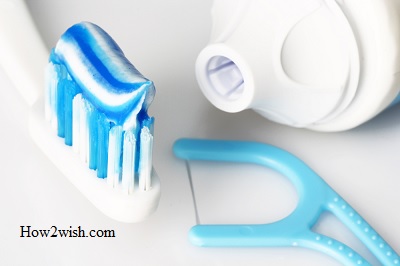Oral hygiene and dental personal care products are a broad group of various accessories, devices, and other items that are used to maintain the health of hard and soft tissues and maintain their aesthetic appeal. All these devices are divided into basic and additional.
Food particles and plaque should be regularly removed from dental surfaces and mucous membranes. This is done not only for preventive purposes but also to achieve a therapeutic effect in certain situations.

Fixed assets
This subspecies of oral hygiene accessories includes brushes (including electric ones), as well as pastes, powders, and gels for regular cleaning. These are the main tools for removing deposits. All listed devices are classified according to different criteria and are suitable for users with different needs. It is better to choose an effective and at the same time safe method together with the dentist. Specialists of “Dentiki” will definitely help with this.
Toothbrushes
You can brush your teeth with manual models or electric ones. Regardless of the type of accessory, bristles remain the most important selection criterion. It differs not only in the degree of rigidity but also in the configuration of the bristles.
How to Choose the Right Type of Toothbrush for You | Soft or Hard?
Varieties
Main types of accessories:
- Classic. The effectiveness of conventional models depends on the material of manufacture, the stiffness, and the arrangement of the bristles, as well as on the brushing technique used by the user.
- Electrical. Removes food particles and soft plaque by automatically rubbing the bristles against enamel and gums. The head can not only rotate but also move in different directions.
- Ultrasonic. The most modern type of brush. Deposits are removed by high-frequency sonication. Ultrasonic cleaning is more effective than the use of manual and electrical devices, but the cost of such a device is higher than others.
Classification depending on the composition of the bristles:
- Natural. Made from animal hairs. These do not have good wear resistance, they often have to be changed.
- Synthetic. Made from special artificial materials with safety for users.
Types according to the location of the bristles:
- Oblique at an angle;
- Multilevel;
- Beam.
What else to look for when choosing toothbrushes – personal oral hygiene products:
- Head shape;
- The possibility of changing the amplitude and intensity of rotation;
- Availability of additional functions.
Bristle classes according to degrees of hardness
Kinds:
- Super soft. These brushes are recommended by dentists in special cases where indicated.
- Soft. Indicated for the smallest consumers, as well as people with hypersensitivity and bleeding gums.
- Medium hardness. A universal option for everyone, even in the presence of orthodontic constructions and prostheses.
- Rigid. Such devices are used with an increased predisposition to stone formation, as well as for cleaning removable and non-removable elements of prosthetics.
Pastes
A specialized paste or gel is used regularly to remove plaque and food particles, freshen breath, whiten enamel, and prevent dental diseases. When choosing personal oral hygiene products of this type, it is necessary:
- Take into account the state
- Carefully study the composition (there should be no potentially dangerous synthetic components);
- Pay attention to the index of abrasiveness;
- Periodically alternate different types.
Types of pastes
Classification:
- Universal. Suitable for patients with healthy teeth and gums. Can be used regularly to clean hard and soft surfaces and to eliminate odors. There are no medicinal components in such formulations, however, antiseptics and minerals may be contained.
- Therapeutic and prophylactic. They include special components that prevent the spread of inflammation and strengthen enamel and mucous membranes. They may contain essential oils, plant extracts, and minerals.
- With fluorine. They are prescribed for patients with weakened, sensitive teeth, prone to the development of carious lesions.
- Whitening. They perform not a preventive or therapeutic, but an exclusively aesthetic function. Since the abrasives in the composition can damage the enamel layer, dentists advise not to use such pastes more than 2-3 times a week.
Electric brushes
These models run on batteries or rechargeable batteries. Classification of such oral hygiene products in dentistry:
- Rotary. They make pulsating or reciprocating rotational movements. They are very easy to use regularly, and the price of such models does not bite.
- Sound. They operate at certain frequencies with the participation of a built-in high-frequency generator that transmits vibrations to the head of the device.
- Ultrasonic. Effectively remove plaque with ultrasound and prevent the accumulation of bacteria on tooth surfaces. Contraindicated in pregnancy, oncology, and wearing a pacemaker.
Additional items and means of individual oral hygiene
Adults and children know about regular brushing of teeth in the morning and in the evening. However, oral hygienic care involves the use of not only the usual brush with paste but also other devices that show high efficiency. They are used in addition to the main methods and cannot completely replace them.
Dental floss (floss)
The brush does not clean the interdental spaces effectively, since the bristles are not able to penetrate such tight gaps.
There are many options for such products in stores. However, dentists agreed that the types of threads are not so important if you know how to use them. For beginners, it is recommended to purchase waxed types, because such flosses freely penetrate into the gaps between units, do not break through, and do not diverge into fibers.
For easier use, special holders called flosses have been invented. They are suitable for people who have not learned how to floss properly, as well as for patients with impaired mobility of the phalanges of the fingers of the upper extremities. An additional technique can be universally used during pregnancy at any gestational age.

Irrigators
Such devices are one of the types of modern oral hygiene products designed for cleaning, massaging, and washing teeth, gums, and tongues, as well as the most inaccessible areas. Principle of operation: a directed stream of liquid is fed into the nozzle under pressure and effectively removes deposits in the interdental spaces. In this case, you can use both ordinary water and ready-made pharmacy solutions.
The irrigator is not able to replace a toothbrush. This is an additional accessory for high-quality oral hygienic care. It can be used by patients of different ages and genders, with various medical histories. However, before purchasing a particular model, it is advisable to consult a dentist.
Types of devices according to various criteria:
- By design: stationary, portable, mechanical, and flow;
- According to the principle of action: pulse, microbubble, with a monojet.
Some models have only one universal nozzle, others are equipped with many elements to suit the needs of different users. There are special removable parts for braces, prostheses, tongues, and even for washing the sinuses. In addition, the devices often provide the ability to control the pressure force of the liquid jet.
Chewing gums
Every day, from TV screens and from the pages of magazines, advertisers report the incredible properties of this personal oral hygiene product. Can such information be trusted?
A sweetish, mostly minty delicacy really helps to remove food particles from the interdental spaces, which means preventing various dental diseases if consumed after each meal. However, chewing gum will never replace flossing and brushing, which are more effective. In addition, due to the stimulation of salivation, a large amount of gastric juice is released, which can subsequently lead to problems with the digestive organs.
Dentists note that you need to chew the product for no more than 20 minutes. Chewing gum can be a good alternative to other means if the most effective ones are not currently available. It is important to remember that only gum that does not contain sugar differs in useful properties. Using sugar-containing products can provoke caries.
Before use, you should study the composition. Best of all, if the product contains fluoride, xylitol, and aluminum lactate, which prevents the formation of plaque and reduces soft tissue bleeding and inflammation. The undeniable advantages of this additional oral hygiene method also include helping to eliminate bad breath from the mouth caused by the decay of food particles that get stuck in the interdental spaces.
Unfortunately, not all advertising promises should be unconditionally believed. A snow-white smile will definitely not become, because chewing gum does not remove hard plaque. This is a good additional method as part of complex care, but it is strongly not recommended to use it too often.
Rinsers and other liquids
Liquid care formulations are additional personal oral hygiene products for the oral cavity and teeth. They contain various active ingredients that affect their preventive and therapeutic properties:
- For the prevention of caries – fluorides;
- To reduce the formation of deposits – plant extracts;
- To reduce bleeding and inflammation of the gums – essential oils, antiseptics;
- Amino fluorides, and potassium salts – reduce the sensitivity of dental units.
There are several main types of liquids for hygiene care:
- Rinsers. Should be used after brushing and rinsing the mouth with clean water. To do this, take a measuring cup of the finished composition and rinse your mouth for half a minute. The procedure will be most effective if you periodically alternate products with different active ingredients.
- Penki. Needed for cleansing, as an addition to pasta. They are also suitable for use immediately after meals when there is no brush at hand. The composition, as a rule, contains enzyme substances that facilitate the removal of deposits, as well as fluorides and other compounds for the treatment and prevention of pathological processes.
- Elixirs. Such solutions contain ethyl alcohol in a high concentration (up to 60%), which means that they must be diluted with water. Their preventive and therapeutic properties are similar to rinses. How exactly to apply diluted concentrated liquids is indicated in the annotation.
- concentrates. Alcohol-containing substances are not diluted if prescribed as part of a complex treatment of inflammatory processes. For prevention, they should be diluted with water.
- Sprays. They help to freshen your breath due to the content of special fragrances. Often contain components such as plant extracts, essential oils, and antiseptic substances.
What kind of means should be used in a particular case, only a doctor will help determine.
Professional teeth cleaning
Dentists recommend resorting to this procedure at least once every six months. During one visit to the dental clinic, a whole range of activities is performed:
- The plaque is cleaned off;
- The stone is removed;
- Disease prevention;
- The general condition improves.
Home care does not provide 100% protection of hard and soft tissues from external influences. Interdental spaces and other hard-to-reach areas are difficult to clean with a brush and paste, and pathogenic microorganisms provoking caries and other diseases actively multiply in these places. Professional help is essential if a patient has formed a stone, a dense whitish layer has accumulated on the enamel, bad breath is present, and gums bleed.
There are many effective techniques used by dentists. Dentiki specialists will help you choose the appropriate option depending on the patient’s health status, the structure, and thickness of plaque or stone, the location of deposits, the person’s age category, and financial capabilities. Some methods are used in combination to achieve maximum results.
Types of professional cleaning:
- Manual (mechanical). The doctor uses special tools for processing. The procedure should be performed by a professional since the likelihood of damaging the enamel is extremely high.
- Ultrasonic. The doctor uses ultrasound to destroy hard plaque and then washes away its particles with water.
- Laser. Deposits are cleaned off with a special laser beam. The oral cavity is disinfected. The technique is the most expensive.
- airflow. Hard and soft tissues are processed under pressure with a mixture of air, water, and abrasives. Dental units become lighter without damaging their outer layer.
- Polishing. The final procedure is during which the doctor eliminates the roughness and small cracks formed after using the methods listed above.
- Fluorination. Helps strengthen enamel, reduce sensitivity, and prevent caries. Hard tissues are treated with special formulations with fluorides.
Summarize
Basic and additional means of personal hygiene of the oral cavity, teeth, and gums, used in combination, can prevent the development of pathological processes. Every person who cares about their health must observe the following rules:
- Resort to regular cleaning in the morning and evening;
- Use floss, rinses, or other liquid formulations after meals throughout the day;
- Choose the right brushes, pastes, and other devices;
- Undergo professional procedures for removing deposits in a clinic every six months.
For advice and selection of effective oral hygiene products, we recommend contacting the specialists of the dental center “Dentika”.

